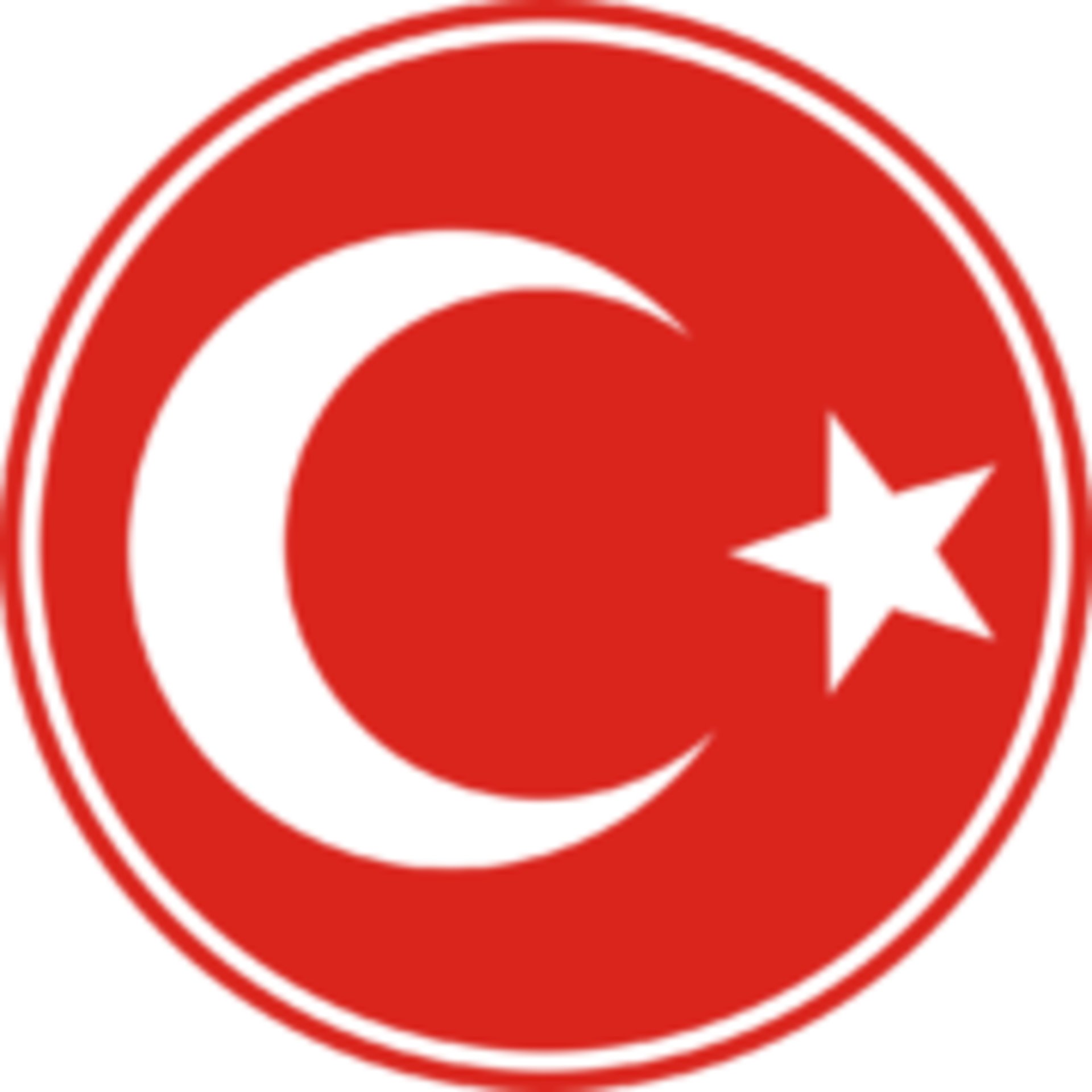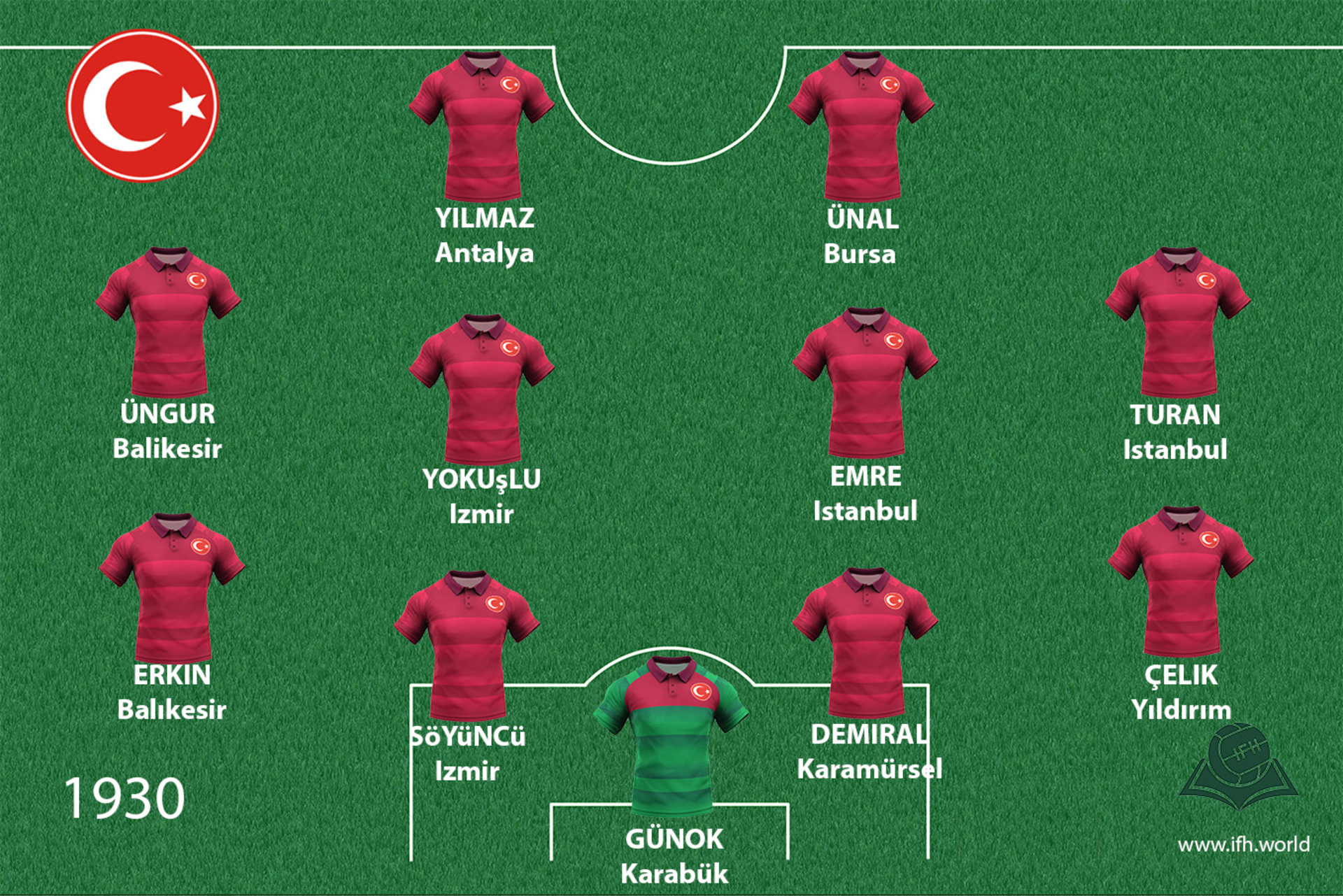Republic of Turkey
Under the regime of Kemal Ataturk, the modern Republic of Turkey was created In the new post-war political map of Southeastern Europe and the Middle East.

Coat of arms
Shirt
| Position | First name | Last name | Mjesto rođenja | Like | Dislike | |
|---|---|---|---|---|---|---|
| GK | Mert | GüNOK | Karabük |
0 |
1 |
|
| GK | Onur | KIVRAK | Manisa |
0 |
1 |
|
| GK | Volkan | BABACAN | Antalya |
8 |
14 |
|
| DC | Merih | DEMIRAL | Kocaeli |
0 |
1 |
|
| DC | Ozan | KABAK | Ankara |
1 |
1 |
|
| DC | Serdar | AZIZ | Bursa |
1 |
1 |
|
| DRL | Ugur | CIFTCI | Sivas |
0 |
1 |
|
| DRL/ML | Ismail | KOYBASI | Hatay |
1 |
0 |
|
| DR | Gokhan | GONUL | Bafra |
3 |
3 |
|
| DR | Zeki | CELIK | Bursa |
1 |
0 |
|
| DR/MR | Sener | OZBAYRAKLI | Borçka |
0 |
1 |
|
| DL/MLC | Caner | ERKIN | Balıkesir |
11 |
13 |
|
| DC/DMC | Caglar | SÖYÜNCÜ | Izmir |
7 |
13 |
|
| DMC | Okay | YOKUSLU | Izmir |
1 |
0 |
|
| DMC | Ozan | TUFAN | Bursa |
8 |
12 |
|
| DMC | Selcuk | INAN | İskenderun |
11 |
12 |
|
| DMC/DC | Mehmet | TOPAL | Malatya |
4 |
8 |
|
| MC | Emre | BELöZOGLU | Istanbul |
1 |
0 |
|
| MC | Irfan Can | KAHVECI | Corum |
0 |
1 |
|
| MRLC | Cengiz | ÜNDER | Balikesir |
4 |
5 |
|
| AMC | Yusuf | YAZICI | Trabzon |
0 |
1 |
|
| AMRLC | Alper | POTUK | Bolvadin |
0 |
1 |
|
| AMRLC | Aras | OZBILIZ | Istanbul |
1 |
0 |
|
| AMRLC | Arda | TURAN | Fatih |
18 |
5 |
|
| AMRLC | Ianis | HAGI | Istanbul |
1 |
0 |
|
| AMRL | Erkan | ZENGIN | Kulu |
0 |
1 |
|
| AMRL | Volkan | SEN | Bursa |
0 |
1 |
|
| FRLC | Adem | BUYUK | Artvin |
0 |
1 |
|
| FRLC | Enes | ÜNAL | Bursa |
8 |
9 |
|
| FC | Burak | YILMAZ | Antalya |
10 |
10 |
|
| FC | Mehmet | BATDAL | Izmir |
0 |
1 |
|
| FC/SS | Muhammet | DEMIR | Trabzon |
0 |
1 |
The end of World War I marked a territorial and political breakup for the Ottoman Empire. First, by the peace of Sevres, the Sultan was degraded to the shameful position of a British protégé, and the country was literally torn apart. The Bosporus and the Dardanelles were formally under Allied control, and the coasts of Asia Minor were assigned to Greece, France and Italy. The former oil-rich Middle East and Middle East was split between the United Kingdom and France. In some areas (Iraq, Kuwait) they have set up loyal local dynasties, while remaining subordinate to their direct authority, but these areas will no longer be called "colonies" but "mandates" due to the growing unpopularity of imperialism. However, in two consecutive wars within the period 1919 to 1922, first against the Sultan's forces and Western European forces and then against Greece, the revolutionary army, led by Kemal Ataturk, annulled certain treaties from Sevres and founded the Turkish Republic, which included Istanbul with a small I hinterland on the European side and Asia Minor.
The tragic consequence of the war with Greece will be the forced exchange of Muslim and Orthodox populations between the two countries, which totaled up to over one and a half million people. He has introduced a number of radical reforms into Turkish society. According to Ataturk, nothing prevented the advancement of the former Empire as much as religious interference in the field of science, and therefore directed the state toward secularism. It also "ruined" the way of dressing Islamic men and women, and in order to strengthen Turkish national consciousness at the expense of a broader Islamic sense of community, it imposed Latin on the people. Yet, due to the identity crisis that had emerged from the disappearance of the Empire, intellectuals and the ruling class were not considered Turks but subjects of a universal Islamic state ruled by the Sultan.
Sources
- Benedict ANDERSON, Nacija: zamišljena zajednica : razmatranja o porijeklu i širenju nacionalizma, Zagreb 1990.
- William F. ENGDAHL, Stoljeće rata : anglo-američka naftna politika i novi svjetski poredak, Zagreb, 2008.
- Niall FERGUSON, Kolos, Zagreb, 2011.
- Grupa autora, Povijest: Prvi svjetski rat i poslijeratno doba (1914. - 1936.) , knjiga XVI., Zagreb 2008.
- Eric J. HOBSBAWM, Doba ekstrema : kratko dvadeseto stoljeće 1914.-1991, Zagreb, 2009.
- Felipe FERNANDEZ-ARMESTO, Narodi Europe, Zagreb, 1997.,231
- Vasilj POPOVIĆ, Istočno pitanje , Sarajevo, 1956.
- Grb: https://en.wikipedia.org/wiki/National_emblem_of_Turkey
